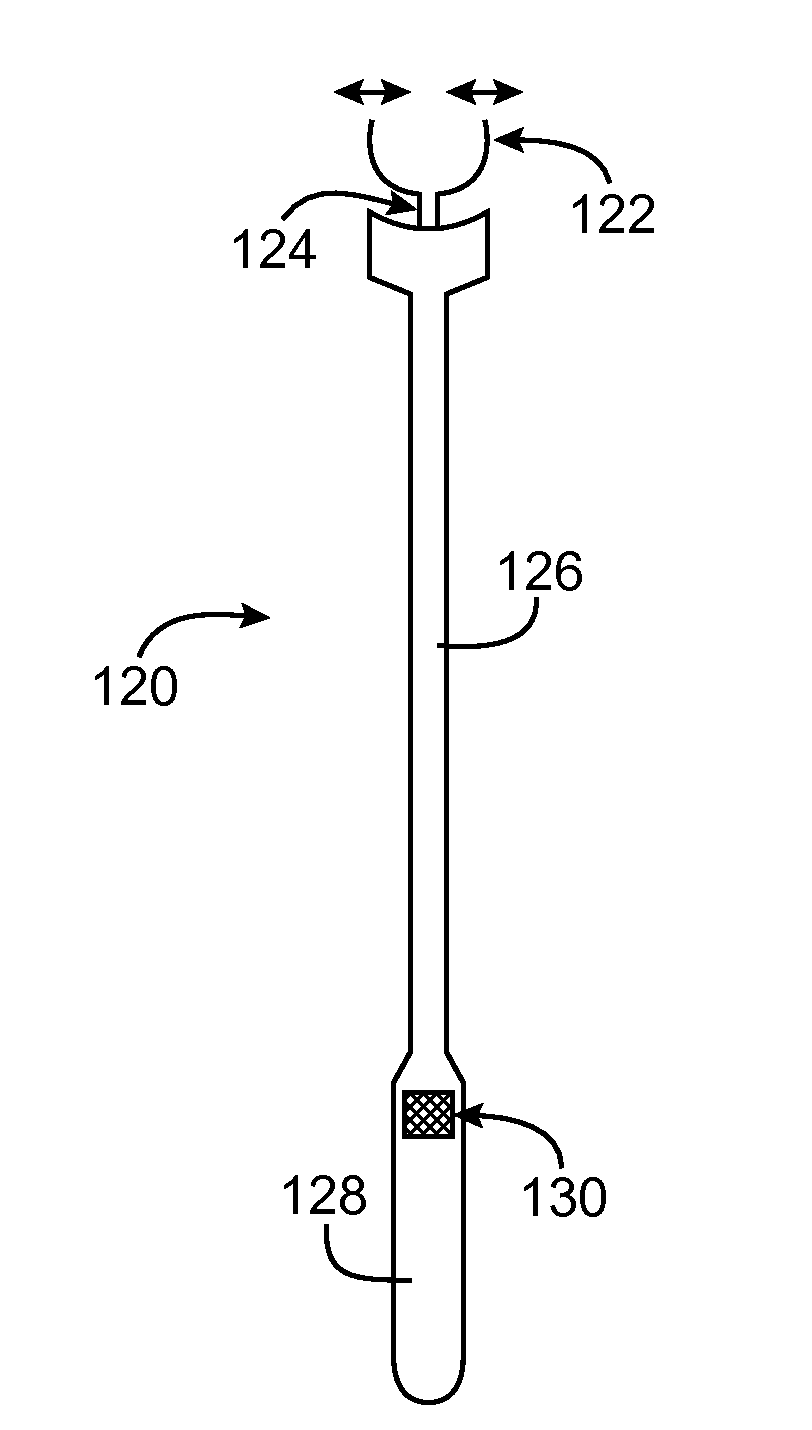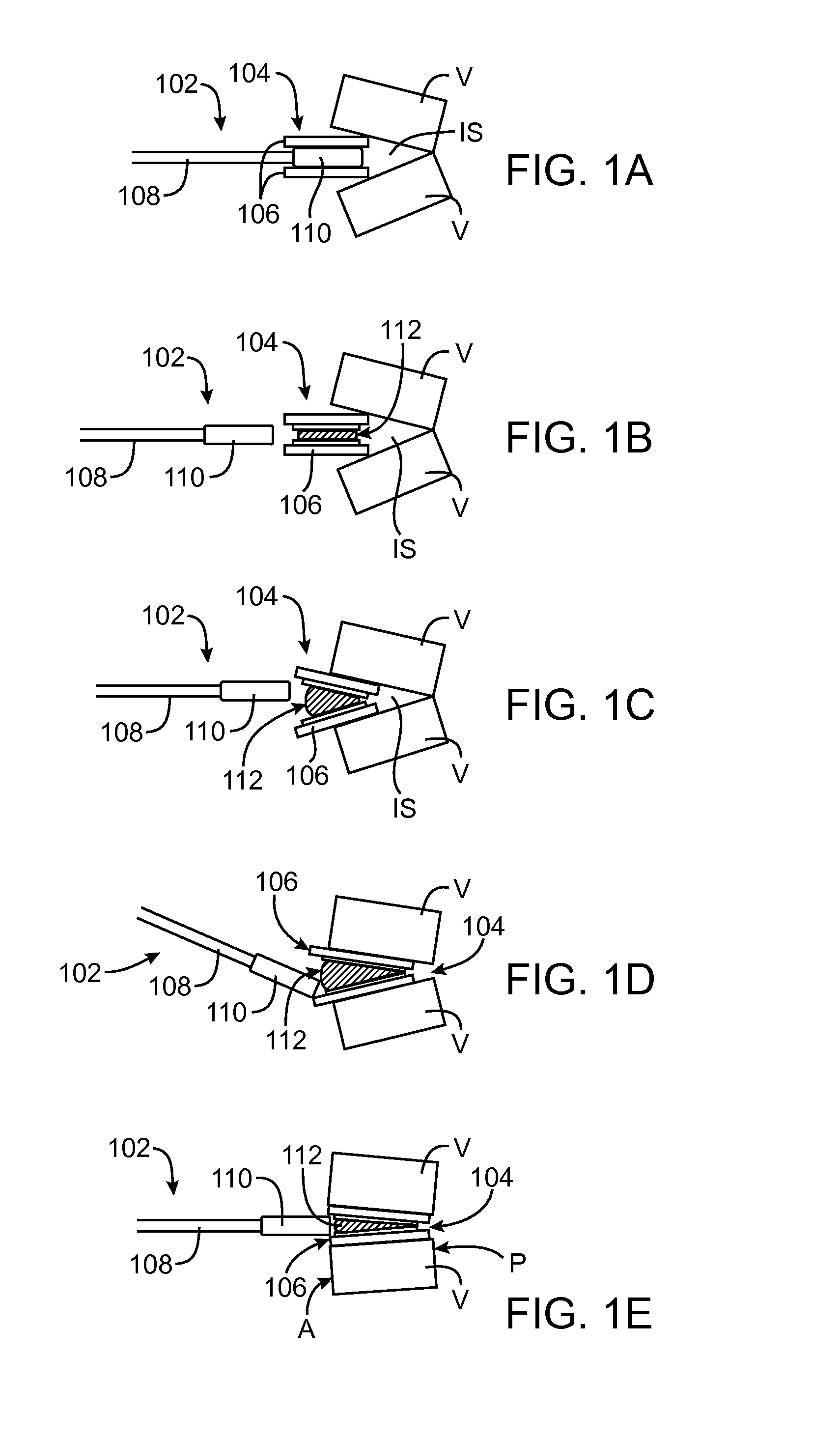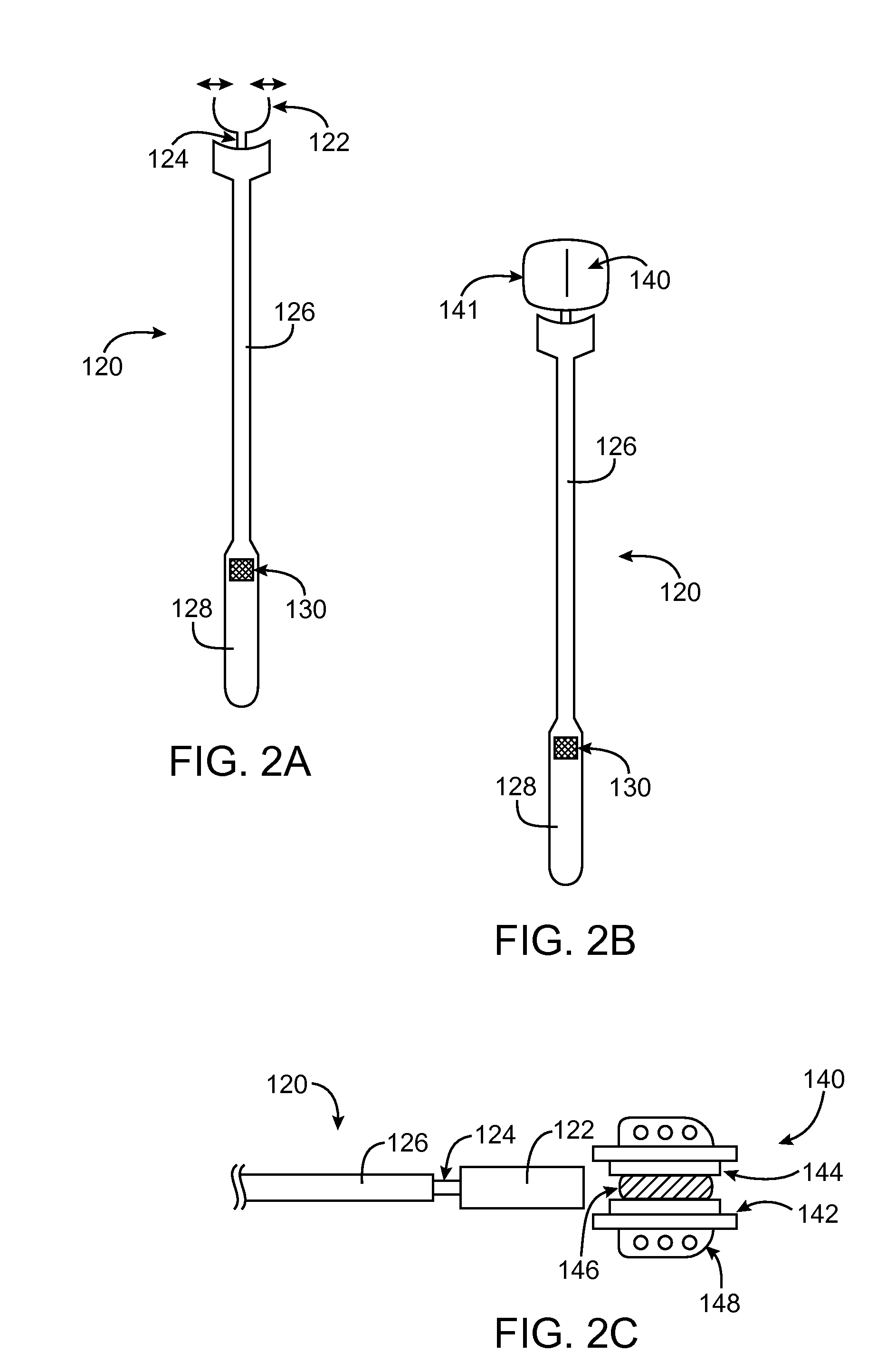Methods and Apparatus for Intervertebral Disc Prosthesis Insertion
a technology of intervertebral discs and prostheses, applied in the field of medical devices and methods, can solve the problems of limiting the load bearing area between the plates and the core, and achieve the effects of reducing distraction, avoiding tissue trauma, and minimising or reducing intervertebral distraction
- Summary
- Abstract
- Description
- Claims
- Application Information
AI Technical Summary
Benefits of technology
Problems solved by technology
Method used
Image
Examples
Embodiment Construction
[0038]Referring to FIGS. 1A-1E, in one embodiment a method for inserting an intervertebral disc prosthesis 104 into an intervertebral space IS between two adjacent vertebrae V first involves inserting the disc prosthesis 104 partway into the space IS while the prosthesis 104 is constrained (FIG. 1A). By “constrained” it is meant that endplates 106 of the prosthesis 104 are not free to articulate (move) about a core 112 (FIGS. 1B-1E) of the prosthesis 104. To insert the prosthesis 104 partway under constraint, an insertion device 102 may be used. Such an insertion device 102 may suitably include a grasping member 110 coupled with an elongate shaft 108. At an end opposite the grasping member 110 (not shown), the insertion device 102 may include a handle, an actuator to control the grasping member 110 and / or any other suitable features, some of which are described further below.
[0039]The prosthesis 104 may be inserted as far into the intervertebral space IS under constraint as is desir...
PUM
 Login to View More
Login to View More Abstract
Description
Claims
Application Information
 Login to View More
Login to View More - R&D
- Intellectual Property
- Life Sciences
- Materials
- Tech Scout
- Unparalleled Data Quality
- Higher Quality Content
- 60% Fewer Hallucinations
Browse by: Latest US Patents, China's latest patents, Technical Efficacy Thesaurus, Application Domain, Technology Topic, Popular Technical Reports.
© 2025 PatSnap. All rights reserved.Legal|Privacy policy|Modern Slavery Act Transparency Statement|Sitemap|About US| Contact US: help@patsnap.com



